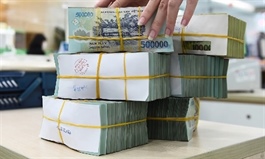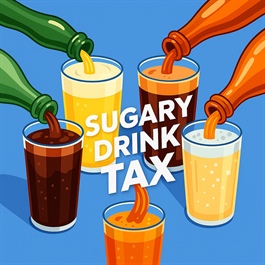Continued VAT cuts aim to boost economic growth
Continued VAT cuts aim to boost economic growth
The National Assembly has ratified continued VAT cuts through 2026 to stimulate economic recovery, ease business burdens, and maintain momentum for growth and digital transformation.
On June 17, the National Assembly (NA) passed a resolution to hold a 2 per cent VAT rate reduction for most goods and services subject to a 10 per cent rate.
Certain sectors remain excluded from the tax cut, including telecommunications, finance, banking, securities, insurance, real estate, metal products, mineral products (excluding coal), and goods and services subject to a special consumption tax (excluding fuel).
The resolution will take effect from July 1 and remain valid until December 31, 2026.

Minister of Finance Nguyen Van Thang presented the report on the VAT-related resolution at the NA session on June 17 |
Before the vote, Minister of Finance Nguyen Van Thang presented a report addressing feedback on the draft resolution.
Thang acknowledged that while some lawmakers suggested applying the 2 per cent VAT cut to all goods and services, several others proposed deeper cuts of 4-5 per cent for groups most in need of support.
“The current draft resolution has widened the scope of eligible beneficiaries compared to previous resolutions, along with extending the implementation timeline. Sectors such as transport, logistics, and IT services have been added to the list of activities eligible for the reduced rate,” said Thang.
He further explained that under the existing VAT Law, services such as education, vocational training, and healthcare are already exempt from VAT and thus do not require further cuts.
Similarly, financial services, banking, securities, and insurance are non-taxable under VAT regulations. Meanwhile, sectors like telecommunications and real estate, which have shown strong growth, are not eligible for the reduction based on the criteria set out in a resolution which introduced a comprehensive fiscal and monetary policy package aimed at supporting the country's socioeconomic recovery.
The government estimates that the tax relief will reduce state revenue by approximately $4.87 billion over the second half of 2025 and throughout 2026.
If the reduction were to be applied to all goods and services currently subject to the 10 per cent VAT rate, the loss in revenue would increase to an estimated $6.68 billion, including $2.16 billion in the second half of 2025 and $4.52 billion in 2026.
Responding to concerns over whether the VAT cut would impact budget expenditures or fiscal balance, Thang stressed that while the policy may cause short-term revenue losses, it will also stimulate production and business activities, thereby supporting broader economic growth and potentially increasing tax revenues from other sources.
“To offset these impacts, the government will implement a series of strategic measures,” said Thang.
First, prioritising the implementation of fiscal and economic policies already approved by the NA and the government to support businesses and individuals, aiming for GDP growth of at least 8 per cent in 2025. This is expected to expand the tax base and generate additional revenue.
Second, the government will enhance revenue collection efforts by strengthening tax administration, accelerating digital transformation in tax processes, and focusing on high-potential sectors and localities.
The goal is to increase state revenue in 2025 by approximately 10 per cent compared to the estimated revenue in 2024.
Third, public spending will be tightly managed. Authorities should improve budget efficiency, exercise fiscal discipline, and proactively mobilise contingency funds and other legal financial resources to address natural disasters, disease outbreaks, and other urgent needs, ensuring fiscal balance at all government levels.
- 12:07 18/06/2025




























